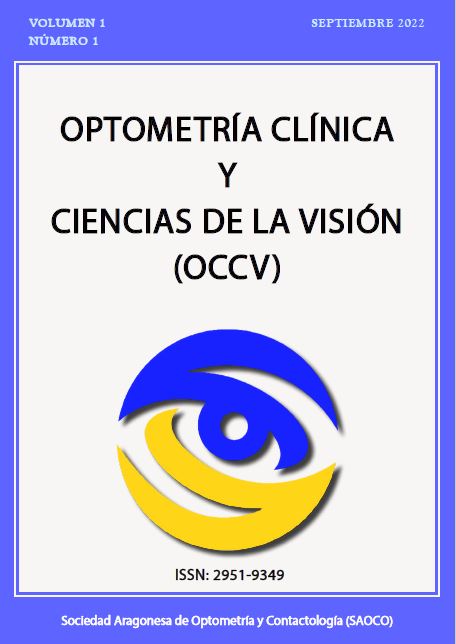Neurooptometría Deportiva
DOI:
https://doi.org/10.71413/cghawt03Palabras clave:
Optometría Deportiva, Ceguera, Neurooptometría, Neurooftalmología, Neurooptometría DeportivaResumen
Relevancia: Presentación de una nueva disciplina para presentar una combinación de áreas de gran aplicación como es la Optometría deportiva y la neurooptometría con interacción profesional de dos sectores como son la Optometría (baja visión y optometría deportiva) y la neurooftalmología. Se aportan datos para explicar el término.
Resumen: La neurooptometría deportiva es un conjunto de disciplinas para atender al deportista contemplando visión desde la mejor posible hasta la ceguera total pero con resto visual, de valores por debajo de 2,6 logMAR. En caso de problemas visuales con afectación neurológica se activa el protocolo completo con examen optométrico para la refracción básica, medida de la visión binocular y acomodación pero también cualquier otra prueba que aporte y aclare a qué nivel neurológico se encuentra con posibilidades de tratamiento para mejorar rendimiento deportivo.
Referencias
Clark, J.F., et al., Vision training methods for sports concussion mitigation and management. J Vis Exp, 2015(99): p. e52648. DOI: https://doi.org/10.3791/52648-v
Jabnoun, S., R. Borji, and S. Sahli, Postural control of Parkour athletes compared to recreationally active subjects under different sensory manipulations: A pilot study. Eur J Sport Sci, 2019. 19(4): p. 461-470. DOI: https://doi.org/10.1080/17461391.2018.1527948
Romeas, T. and J. Faubert, Soccer athletes are superior to non-athletes at perceiving soccer-specific and non-sport specific human biological motion. Front Psychol, 2015. 6: p. 1343. DOI: https://doi.org/10.3389/fpsyg.2015.01343
Meng, F.W., et al., Team sport expertise shows superior stimulus-driven visual attention and motor inhibition. PLoS One, 2019. 14(5): p. e0217056. DOI: https://doi.org/10.1371/journal.pone.0217056
Nuri, L., et al., Reaction time and anticipatory skill of athletes in open and closed skill-dominated sport. Eur J Sport Sci, 2013. 13(5): p. 431-6. DOI: https://doi.org/10.1080/17461391.2012.738712
Kellmann, M., Preventing overtraining in athletes in high-intensity sports and stress/recovery monitoring. Scand J Med Sci Sports, 2010. 20 Suppl 2: p. 95-102. DOI: https://doi.org/10.1111/j.1600-0838.2010.01192.x
Bidzan-Bluma, I. and M. Lipowska, Physical Activity and Cognitive Functioning of Children: A Systematic Review. Int J Environ Res Public Health, 2018. 15(4). DOI: https://doi.org/10.3390/ijerph15040800
Ciuffreda, K.J. and B. Tannen, Future directions in neuro-optometry. Concussion, 2020. 5(4): p. Cnc80. DOI: https://doi.org/10.2217/cnc-2020-0013
Cohen, A.H., Vision rehabilitation for visual-vestibular dysfunction: the role of the neuro-optometrist. NeuroRehabilitation, 2013. 32(3): p. 483-92. DOI: https://doi.org/10.3233/NRE-130871
Hunfalvay, M., et al., Smooth Pursuit Eye Movements as a Biomarker for Mild Concussion within 7-Days of Injury. Brain Inj, 2021. 35(14): p. 1682-1689. DOI: https://doi.org/10.1080/02699052.2021.2012825
Zelinsky, D. and C. Feinberg, Quantitative electroencephalograms and neuro-optometry: a case study that explores changes in electrophysiology while wearing therapeutic eyeglasses. Neurophotonics, 2017. 4(1): p. 011013. DOI: https://doi.org/10.1117/1.NPh.4.1.011013
Verghese, P., S.P. McKee, and D.M. Levi, Attention deficits in Amblyopia. Curr Opin Psychol, 2019. 29: p. 199-204. DOI: https://doi.org/10.1016/j.copsyc.2019.03.011
Irving, E.L., et al., Prevalence of Convergence Insufficiency in Parkinson's Disease. Mov Disord Clin Pract, 2017. 4(3): p. 424-429. DOI: https://doi.org/10.1002/mdc3.12453
Kwan, S.C.K., et al., Ocular features of patients with Parkinson's disease examined at a Neuro-Optometry Clinic in a tertiary eye care center. Indian J Ophthalmol, 2022. 70(3): p. 958-961. DOI: https://doi.org/10.4103/ijo.IJO_948_21
Tannen, B., et al., Prevalence of esophoria in concussed patients. J Optom, 2019. 12(1): p. 64-68. DOI: https://doi.org/10.1016/j.optom.2018.02.003
Reddy, A.V.C., et al., Reading eye movements in traumatic brain injury. J Optom, 2020. 13(3): p. 155-162. DOI: https://doi.org/10.1016/j.optom.2019.10.001
Harle, D.E. and B.J. Evans, The optometric correlates of migraine. Ophthalmic Physiol Opt, 2004. 24(5): p. 369-83. DOI: https://doi.org/10.1111/j.1475-1313.2004.00212.x
Zhang, Y., et al., Advances in retina imaging as potential biomarkers for early diagnosis of Alzheimer's disease. Transl Neurodegener, 2021. 10(1): p. 6. DOI: https://doi.org/10.1186/s40035-021-00230-9
Heath Jeffery, R.C., et al., Unequal pupils: Understanding the eye's aperture. Aust J Gen Pract, 2019. 48(1-2): p. 39-42. DOI: https://doi.org/10.31128/AJGP-07-18-4641
Kapoor, N. and K.J. Ciuffreda, Assessment of neuro-optometric rehabilitation using the Developmental Eye Movement (DEM) test in adults with acquired brain injury. J Optom, 2018. 11(2): p. 103-112. DOI: https://doi.org/10.1016/j.optom.2017.01.001
Formenti, D., et al., Perceptual vision training in non-sport-specific context: effect on performance skills and cognition in young females. Sci Rep, 2019. 9(1): p. 18671. DOI: https://doi.org/10.1038/s41598-019-55252-1
Land, M.F., Vision, eye movements, and natural behavior. Vis Neurosci, 2009. 26(1): p. 51-62. DOI: https://doi.org/10.1017/S0952523808080899
Schwab, S. and D. Memmert, The impact of a sports vision training program in youth field hockey players. J Sports Sci Med, 2012. 11(4): p. 624-31.
Jenerou, A., B. Morgan, and R.S. Buckingham, A Vision Training Program's Impact on Ice Hockey Performance. 2015, Optometry & visual performance.
Vater, C., S. Luginbühl, and L. Magnaguagno, Testing the functionality of peripheral vision in a mixed-methods football field study. J Sports Sci, 2019. 37(24): p. 2789-2797. DOI: https://doi.org/10.1080/02640414.2019.1664100
Beavan, A., et al., The effect of stroboscopic vision on performance in a football specific assessment. Sci Med Footb, 2021. 5(4): p. 317-322. DOI: https://doi.org/10.1080/24733938.2020.1862420
Kirscher, D.W., Sports vision training procedures. Optom Clin, 1993. 3(1): p. 171-82.
Appelbaum, L.G., et al., Improved Visual Cognition through Stroboscopic Training. Front Psychol, 2011. 2: p. 276. DOI: https://doi.org/10.3389/fpsyg.2011.00276
Mon-López, D., et al., Air shooting competition effects on visual skills depending on the sport level. Eur J Sport Sci, 2022. 22(3): p. 336-343. DOI: https://doi.org/10.1080/17461391.2021.1874540
Leong, D., et al., Visual Structure and Function in Collision Sport Athletes. J Neuroophthalmol, 2018. 38(3): p. 285-291. DOI: https://doi.org/10.1097/WNO.0000000000000572
Malik, R.N., R. Cote, and T. Lam, Sensorimotor integration of vision and proprioception for obstacle crossing in ambulatory individuals with spinal cord injury. J Neurophysiol, 2017. 117(1): p. 36-46. DOI: https://doi.org/10.1152/jn.00169.2016
Büttner, F., et al., Participation in pre-injury level sport one-year following sport-related concussion: A prospective, matched cohort study. J Sci Med Sport, 2021. 24(6): p. 561-566. DOI: https://doi.org/10.1016/j.jsams.2020.12.014
Tapper, A., et al., Executive function deficits in team sport athletes with a history of concussion revealed by a visual-auditory dual task paradigm. J Sports Sci, 2017. 35(3): p. 231-240. DOI: https://doi.org/10.1080/02640414.2016.1161214
Archivos adicionales
Publicado
Número
Sección
Categorías
Licencia
Derechos de autor 2024 Prof. Ricardo Bernárdez Vilaboa (Autor/a)

Esta obra está bajo una licencia internacional Creative Commons Atribución-NoComercial 4.0.



